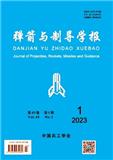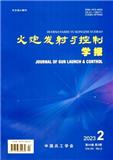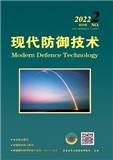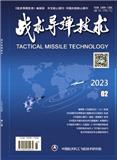辐射探测技术与方法(英文)(Radiation Detection Technology and Methods)征稿须知及文章特色
1、投稿方式:在线投稿。
2、官网网址:
https://link.springer.com/journal/41605
https://www.springer.com/journal/41605
3、投稿系统:
https://www.editorialmanager.com/rdtm/
4、主办单位官网:http://www.ihep.cas.cn/
(中国科学院高能物理研究所)
5、出刊日期:季刊,逢季末月出版。
2023年9月7星期四
《辐射探测技术与方法(英文)》期刊信息
【主办单位官网信息】
http://www.ihep.cas.cn/xwdt/gnxw/2017/201701/t20170106_4732209.html
Radiation Detection Technology and Methods,简称RDTM,是由核电子学与核探测技术分会和中国科学院高能物理研究所主办,斯普林格出版社(Springer)出版的全英文学术电子期刊,2016年10月创刊,2017年正式上线,全球发行。
RDTM发表辐射探测技术及相关领域的最新研究成果,旨在反映该领域科研水平,促进学科发展,加强国内外学术交流。文章形式为原创性和综述性论文,设有快报栏目,发表最新的重要科研成果。期刊主要内容涉及:探测器,核电子学,核仪器与控制,核成像技术,核监测技术,核技术与公共安全,计算机技术在粒子物理实验中的应用,抗辐射电子学与电磁脉冲等领域。
主要栏目:
Detection Technology and Methods
Electronics and System
Computing and Control Technology
Data Processing and Imaging
ISSN: 2509-9930
EISSN: 2509-9949
期刊网址:http://www.springer.com/physics/particle+and+nuclear+physics/journal/41605
在线投稿:https://www.editorialmanager.com/rdtm/default.aspx (未注册的作者需要先注册一个帐号,才能在线投稿)
编辑部邮箱:rdtm@ihep.ac.cn
《辐射探测技术与方法(英文版)》投稿指南
【官网信息】
Submission guidelines
Instructions for Authors
Manuscript Submission
Submission
of a manuscript implies: that the work described has not been published
before; that it is not under consideration for publication anywhere
else; that its publication has been approved by all co-authors, if any,
as well as by the responsible authorities – tacitly or explicitly – at
the institute where the work has been carried out. The publisher will
not be held legally responsible should there be any claims for
compensation.
Permissions
Authors
wishing to include figures, tables, or text passages that have already
been published elsewhere are required to obtain permission from the
copyright owner(s) for both the print and online format and to include
evidence that such permission has been granted when submitting their
papers. Any material received without such evidence will be assumed to
originate from the authors.
Online Submission
Please
follow the hyperlink “Submit manuscript” on the right and upload all of
your manuscript files following the instructions given on the screen.
Please
ensure you provide all relevant editable source files. Failing to
submit these source files might cause unnecessary delays in the review
and production process.
Page fees
Accepted
articles will incur a page fee of €50 or 350 Chinese yuan (RMB) per
page, payable after acceptance. The Editorial Office will contact the
corresponding author after acceptance with details of the total amount
payable and the payment method. APCs paid by authors who choose Open
Access publication are in addition to the page fee.
Title Page
Please make sure your title page contains the following information.
Title
The title should be concise and informative.
Author information
The name(s) of the author(s)
The affiliation(s) of the author(s), i.e. institution, (department), city, (state), country
A clear indication and an active e-mail address of the corresponding author
If available, the 16-digit ORCID of the author(s)
If address information is provided with the affiliation(s) it will also be published.
For
authors that are (temporarily) unaffiliated we will only capture their
city and country of residence, not their e-mail address unless
specifically requested.
Abstract
Please provide a structured abstract of 150 to 250 words which should be divided into the following sections:
Purpose (stating the main purposes and research question)
Methods
Results
Conclusion
For life science journals only (when applicable)
Trial registration number and date of registration
Trial registration number, date of registration followed by “retrospectively registered”
Keywords
Please provide 4 to 6 keywords which can be used for indexing purposes.
Declarations
All manuscripts must contain the following sections under the heading 'Declarations'.
If
any of the sections are not relevant to your manuscript, please include
the heading and write 'Not applicable' for that section.
To be used for all articles, including articles with biological applications
Funding (information that explains whether and by whom the research was supported)
Conflicts of interest/Competing interests (include appropriate disclosures)
Availability of data and material (data transparency)
Code availability (software application or custom code)
Authors' contributions (optional: please review the submission guidelines from the journal whether statements are mandatory)
Additional declarations for articles in life science journals that report the results of studies involving humans and/or animals
Ethics approval (include appropriate approvals or waivers)
Consent to participate (include appropriate statements)
Consent for publication (include appropriate statements)
Please
see the relevant sections in the submission guidelines for further
information as well as various examples of wording. Please
revise/customize the sample statements according to your own needs.
Text
Text Formatting
Manuscripts should be submitted in Word.
Use a normal, plain font (e.g., 10-point Times Roman) for text.
Use italics for emphasis.
Use the automatic page numbering function to number the pages.
Do not use field functions.
Use tab stops or other commands for indents, not the space bar.
Use the table function, not spreadsheets, to make tables.
Use the equation editor or MathType for equations.
Save your file in docx format (Word 2007 or higher) or doc format (older Word versions).
Manuscripts with mathematical content can also be submitted in LaTeX.
LaTeX macro package (Download zip, 188 kB)
Headings
Please use the decimal system of headings with no more than three levels.
Abbreviations
Abbreviations should be defined at first mention and used consistently thereafter.
Footnotes
Footnotes
can be used to give additional information, which may include the
citation of a reference included in the reference list. They should not
consist solely of a reference citation, and they should never include
the bibliographic details of a reference. They should also not contain
any figures or tables.
Footnotes
to the text are numbered consecutively; those to tables should be
indicated by superscript lower-case letters (or asterisks for
significance values and other statistical data). Footnotes to the title
or the authors of the article are not given reference symbols.
Always use footnotes instead of endnotes.
Acknowledgments
Acknowledgments
of people, grants, funds, etc. should be placed in a separate section
on the title page. The names of funding organizations should be written
in full.
Scientific style
Please always use internationally accepted signs and symbols for units (SI units).
Please use the standard mathematical notation for formulae, symbols etc.:
Italic for single letters that denote mathematical constants, variables, and unknown quantities
Roman/upright
for numerals, operators, and punctuation, and commonly defined
functions or abbreviations, e.g., cos, det, e or exp, lim, log, max,
min, sin, tan, d (for derivative)
Bold for vectors, tensors, and matrices.
References
Citation
Reference citations in the text should be identified by numbers in square brackets. Some examples:
Negotiation research spans many disciplines [3].
This result was later contradicted by Becker and Seligman [5].
This effect has been widely studied [1-3, 7].
Reference list
The
list of references should only include works that are cited in the text
and that have been published or accepted for publication. Personal
communications and unpublished works should only be mentioned in the
text.
The entries in the list should be numbered consecutively.
If available, please always include DOIs as full DOI links in your reference list (e.g. “https://doi.org/abc”).
Journal article
S. Preuss, A. Demchuk Jr., M. Stuke, Appl. Phys. A 61, 33 (1995)
Article by DOI
M.K. Slifka, J.L. Whitton, J Mol Med. (2000) https://doi.org/10.1007/s001090000086
Book
H. Ibach, H. Lüth, Solid-State Physics, 2nd edn. (Springer, Dordrecht, 1996), pp. 45–56
Book chapter
D.M. Abrams, in Conductive Polymers, ed. By R.S. Seymour, A. Smith (Springer, New York, 1973), p. 307
Online document
J.
Cartwright, Big stars have weather too. (IOP Publishing PhysicsWeb,
2007), http://physicsweb.org/articles/news/11/6/16/1. Accessed 26 June
2007
Always use the standard abbreviation of a journal’s name according to the ISSN List of Title Word Abbreviations, see
ISSN.org LTWA
Tables
All tables are to be numbered using Arabic numerals.
Tables should always be cited in text in consecutive numerical order.
For each table, please supply a table caption (title) explaining the components of the table.
Identify
any previously published material by giving the original source in the
form of a reference at the end of the table caption.
Footnotes
to tables should be indicated by superscript lower-case letters (or
asterisks for significance values and other statistical data) and
included beneath the table body.
Artwork and Illustrations Guidelines
Electronic Figure Submission
Supply all figures electronically.
Indicate what graphics program was used to create the artwork.
For vector graphics, the preferred format is EPS; for halftones, please use TIFF format. MSOffice files are also acceptable.
Vector graphics containing fonts must have the fonts embedded in the files.
Name your figure files with "Fig" and the figure number, e.g., Fig1.eps.
Line Art
……
更多详情:
https://www.springer.com/journal/41605/submission-guidelines









